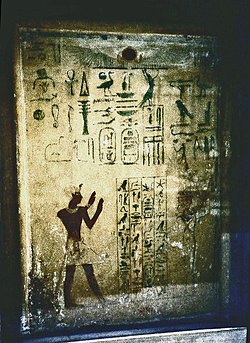Theories
According to Egyptologists Kim Ryholt and Darrell Baker he was a king of the Abydos Dynasty, although they leave his position within the dynasty undetermined. [6] [5] Alternatively, Jürgen von Beckerath sees Snaaib as a king reigning near the end of the 13th Dynasty. [7] [8] [9]
In his study of the Second Intermediate Period, Ryholt elaborates on the idea originally proposed by Detlef Franke that following the collapse of the 13th Dynasty with the conquest of Memphis by the Hyksos, an independent kingdom centered on Abydos arose in Middle Egypt. [10] The Abydos Dynasty thus designates a group of local kinglets reigning for a short time in central Egypt. Ryholt notes that Snaaib is only attested by his stele from Abydos and may thus belong to this dynasty. [5] This conclusion is shared by Darrell Baker but not by von Beckerath, who places Snaaib near the end of the 13th Dynasty. [9]
This page is based on this
Wikipedia article Text is available under the
CC BY-SA 4.0 license; additional terms may apply.
Images, videos and audio are available under their respective licenses.

